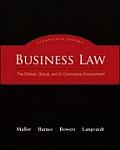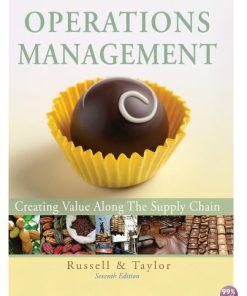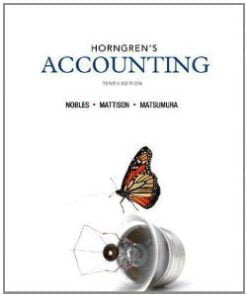Chemistry for Today General Organic and Biochemistry 9th Edition Seager Solutions Manual
$35.00 Original price was: $35.00.$26.50Current price is: $26.50.
Chemistry for Today General Organic and Biochemistry 9th Edition Seager Solutions Manual
This is completed downloadable of Chemistry for Today General Organic and Biochemistry 9th Edition Seager Solutions Manual

Product Details:
- ISBN-10 : 9781305960060
- ISBN-13 : 978-1305960060
- Author: Spencer Seager (Author), Michael Slabaugh (Author), Maren Hansen (Author)
Develop the problem-solving and critical-thinking skills you need to succeed in your course and allied health career with CHEMISTRY FOR TODAY: GENERAL, ORGANIC, AND BIOCHEMISTRY, Ninth Edition. The book’s accessible writing style and real-life applications and case studies will help you appreciate the role that chemistry plays in your daily life and help dispel any fear you may have of chemistry. In addition, the book’s examples of chemistry questions found on allied health professional program entrance examinations and the career information provided on the companion website will help you set goals and focus on achieving them. Finally, this proven text integrates online learning tools that will turn your study time into experiences with chemistry — helping you gain a true understanding of chemical concepts.
Table of Content:
- Chapter 1: Matter, Measurements, and Calculations
- 1.1 What Is Matter?
- 1.2 Properties and Changes
- 1.3 a Model of Matter
- 1.4 Classifying Matter
- 1.5 Measurement Units
- 1.6 the Metric System
- 1.7 Large and Small Numbers
- 1.8 Significant Figures
- 1.9 Using Units in Calculations
- 1.10 Calculating Percentages
- 1.11 Density
- Concept Summary
- Key Terms and Concepts
- Key Equations
- Exercises
- Additional Exercises
- Chemistry for Thought
- Allied Health Exam Connection
- Case Study
- Chemistry Around Us 1.1: A Central Science
- Chemistry Around Us 1.2: Are Chemicals Getting a Bad Rap?
- Chemistry Around Us 1.3: Effects of Temperature on Body Function
- Study Skills 1.1: Help with Calculations
- Chemistry Tips for Living Well 1.1: Choose Wisely for Health Information
- Ask an Expert 1.1: Does Food Density Matter When You’re Trying to Lose Weight?
- Case Study Follow-Up
- Chapter 2: Atoms and Molecules
- 2.1 Symbols and Formulas
- 2.2 Inside the Atom
- 2.3 Isotopes
- 2.4 Relative Masses of Atoms and Molecules
- 2.5 Isotopes and Atomic Weights
- 2.6 Avogadro’s Number: the Mole
- 2.7 The Mole and Chemical Formulas
- Concept Summary
- Key Terms and Concepts
- Exercises
- Additional Exercises
- Chemistry for Thought
- Allied Health Exam Connection
- Case Study
- Chemistry Around Us 2.1: Chemical Elements in the Human Body
- Chemistry Around Us 2.2: Looking at Atoms
- Ask a Pharmacist 2.1: Uprooting Herbal Myths
- Chemistry Tips for Living Well 2.1: Take Care of Your Bones
- Study Skills 2.1: Help with Mole Calculations
- Case Study Follow-Up
- Chapter 3: Electronic Structure and the Periodic Law
- 3.1 The Periodic Law and Table
- 3.2 Electronic Arrangements in Atoms
- 3.3 The Shell Model and Chemical Properties
- 3.4 Electronic Configurations
- 3.5 Another Look at the Periodic Table
- 3.6 Property Trends Within the Periodic Table
- Concept Summary
- Key Terms and Concepts
- Exercises
- Additional Exercises
- Chemistry for Thought
- Allied Health Exam Connection
- Case Study
- Chemistry Tips for Living Well 3.1: Watch the Salt
- Chemistry Around Us 3.1 :a Solar Future
- Study Skills 3.1: the Convention Hotels Analogy
- Contents Contents
- Chemistry Around Us 3.2: Transition and Inner-transition Elements in Your Smart Phone
- Case Study Follow-Up
- Chapter 4: Forces between particles
- 4.1 Noble Gas Configurations
- 4.2 Ionic Bonding
- 4.3 Ionic Compounds
- 4.4 Naming Binary Ionic Compounds
- 4.5 The Smallest Unit of Ionic Compounds
- 4.6 Covalent Bonding
- 4.7 Polyatomic Ions
- 4.8 Shapes of Molecules and Polyatomic Ions
- 4.9 The Polarity of Covalent Molecules
- 4.10 More About Naming Compounds
- 4.11 Other Interparticle Forces
- Concept Summary
- Key Terms and Concepts
- Exercises
- Additional Exercises
- Chemistry for Thought
- Allied Health Exam Connection
- Case Study
- Chemistry Tips for Living Well 4.1: Consider the Mediterranean Diet
- Chemistry Around Us 4.1: Water: One of Earth’s Special Compounds
- Ask a Pharmacist 4.1: Are All Iron Preparations Created Equal?
- Study Skills 4.1: Help with Polar and Nonpolar Molecules
- Chemistry Around Us 4.2: Ozone: Good Up High, Bad Nearby
- Case Study Follow-Up
- Chapter 5: Chemical Reactions
- 5.1 Chemical Equations
- 5.2 Types of Reactions
- 5.3 Redox Reactions
- 5.4 Decomposition Reactions
- 5.5 Combination Reactions
- 5.6 Replacement Reactions
- 5.7 Ionic Equations
- 5.8 Energy and Reactions
- 5.9 The Mole and Chemical Equations
- 5.10 The Limiting Reactant
- 5.11 Reaction Yields
- Concept Summary
- Key Terms and Concepts
- Key Equations
- Exercises
- Additional Exercises
- Chemistry for Thought
- Allied Health Exam Connection
- Case Study
- Chemistry Tips for Living Well 5.1: Add Color to Your Diet
- Chemistry Around Us 5.1: Teeth Whitening
- Chemistry Around Us 5.2: Electric Cars
- Study Skills 5.1: Help with Oxidation Numbers
- Case Study Follow-Up
- Chapter 6: The States of Matter
- 6.1 Observed Properties of Matter
- 6.2 The Kinetic Molecular Theory of Matter
- 6.3 The Solid State
- 6.4 The Liquid State
- 6.5 The Gaseous State
- 6.6 The Gas Laws
- 6.7 Pressure, Temperature, and Volume Relationships
- 6.8 The Ideal Gas Law
- 6.9 Dalton’s Law
- 6.10 Graham’s Law
- 6.11 Changes in State
- 6.12 Evaporation and Vapor Pressure
- 6.13 Boiling and the Boiling Point
- 6.14 Sublimation and Melting
- 6.15 Energy and the States of Matter
- Concept Summary
- Key Terms and Concepts
- Key Equations
- Exercises
- Additional Exercises
- Chemistry for Thought
- Allied Health Exam Connection
- Case Study
- Chemistry Tips for Living Well 6.1: Get an Accurate Blood Pressure Reading
- Ask a Pharmacist 6.1: Zinc for Colds
- Chemistry Around Us 6.1: Air Travel
- Chemistry Around Us 6.2: Therapeutic Uses of Oxygen Gas
- Study Skills 6.1: Which Gas Law to Use
- Case Study Follow-Up
- Chapter 7: Solutions and Colloids
- 7.1 Physical States of Solutions
- 7.2 Solubility
- 7.3 The Solution Process
- 7.4 Solution Concentrations
- 7.5 Solution Preparation
- 7.6 Solution Stoichiometry
- 7.7 Solution Properties
- 7.8 Colloids
- 7.9 Dialysis
- Concept Summary
- Key Terms and Concepts
- Key Equations
- Exercises
- Additional Exercises
- Chemistry for Thought
- Allied Health Exam Connection
- Case Study
- Chemistry Tips for Living Well 7.1: Stay Hydrated
- Study Skills 7.1: Getting Started with Molarity Calculations
- Chemistry Around Us 7.1: Health Drinks
- Chemistry Around Us 7.2: CO2 Emissions: A Blanket Around the Earth
- Case Study Follow-Up
- Chapter 8: Reaction Rates and Equilibrium
- 8.1 Spontaneous and Nonspontaneous Processes
- 8.2 Reaction Rates
- 8.3 Molecular Collisions
- 8.4 Energy Diagrams
- 8.5 Factors That Influence Reaction Rates
- 8.6 Chemical Equilibrium
- 8.7 The Position of Equilibrium
- 8.8 Factors That Influence Equilibrium Position
- Concept Summary
- Key Terms and Concepts
- Key Equations
- Exercises
- Additional Exercises
- Chemistry for Thought
- Allied Health Exam Connection
- Case Study
- Ask a Pharmacist 8.1: Energy for Sale
- Chemistry Tips for Living Well 8.1: Use Your Phone to Help You Stay Healthy
- Chemistry Around Us 8.1: Why “cold” Does Not Exist
- Study Skills 8.1: Le Châtelier’s Principle in Everyday Life
- Case Study Follow-Up
- Chapter 9: Acids, Bases, and Salts
- 9.1 The Arrhenius Theory
- 9.2 The Brønsted Theory
- 9.3 Naming Acids
- 9.4 The Self-Ionization of Water
- 9.5 The PH Concept
- 9.6 Properties of Acids
- 9.7 Properties of Bases
- 9.8 Salts
- 9.9 The Strengths of Acids and Bases
- 9.10 Analyzing Acids and Bases
- 9.11 Titration Calculations
- 9.12 Hydrolysis Reactions of Salts
- 9.13 Buffers
- Concept Summary
- Key Terms and Concepts
- Key Equations
- Exercises
- Additional Exercises
- Chemistry for Thought
- Allied Health Exam Connection
- Case Study
- Contents
- Chemistry Around Us 9.1: Sinkholes
- Study Skills 9.1: Writing Reactions of Acids
- Chemistry Tips for Living Well 9.1: Beware of Heartburn
- Ask an Expert 9.1: Does Diet Play a Role in Peptic Ulcer Disease
- Case Study Follow-Up
- Chapter 10: Radioactivity and Nuclear Processes
- 10.1 Radioactive Nuclei
- 10.2 Equations for Nuclear Reactions
- 10.3 Isotope Half-Life
- 10.4 The Health Effects of Radiation
- 10.5 Measurement Units for Radiation
- 10.6 Medical Uses of Radioisotopes
- 10.7 Nonmedical Uses of Radioisotopes
- 10.8 Induced Nuclear Reactions
- 10.9 Nuclear Energy
- Concept Summary
- Key Terms and Concepts
- Key Equations
- Exercises
- Additional Exercises
- Chemistry for Thought
- Allied Health Exam Connection
- Case Study
- Chemistry Around Us 10.1: Radiation Exposure in Modern Life
- Chemistry Tips for Living Well 10.1: Check the Radon Level in Your Home
- Ask a Pharmacist 10.1: Medications to Avoid on Test Day
- Case Study Follow-Up
- Chapter 11: Organic Compounds: Alkanes
- 11.1 Carbon: the Element of Organic Compounds
- 11.2 Organic and Inorganic Compounds Compared
- 11.3 Bonding Characteristics and Isomerism
- 11.4 Functional Groups: the Organization of Organic Chemistry
- 11.5 Alkane Structures
- 11.6 Conformations of Alkanes
- 11.7 Alkane Nomenclature
- 11.8 Cycloalkanes
- 11.9 The Shape of Cycloalkanes
- 11.10 Physical Properties of Alkanes
- 11.11 Alkane Reactions
- Concept Summary
- Key Terms and Concepts
- Key Equations
- Exercises
- Additional Exercises
- Chemistry for Thought
- Allied Health Exam Connection
- Case Study
- Study Skills 11.1: Changing Gears for Organic Chemistry
- Ask an Expert 11.1: Is Organic Food Worth the Price
- Chemistry Around Us 11.1: Fracking Oil Wells
- Chemistry Tips for Living Well 11.1: Take Care of Dry Skin
- Chemistry Around Us 11.2: Reducing Your Carbon Footprint
- Case Study Follow-Up
- Chapter 12: Unsaturated Hydrocarbons
- 12.1 The Nomenclature of Alkenes
- 12.2 The Geometry of Alkenes
- 12.3 Properties of Alkenes
- 12.4 Addition Polymers
- 12.5 Alkynes
- 12.6 Aromatic Compounds and the Benzene Structure
- 12.7 The Nomenclature of Benzene Derivatives
- 12.8 Properties and Uses of Aromatic Compounds
- Concept Summary
- Key Terms and Concepts
- Key Reactions
- Exercises
- Additional Exercises
- Chemistry for Thought
- Allied Health Exam Connection
- Case Study
- Chemistry Around Us 12.1: Three-dimensional Printers
- Study Skills 12.1: Keeping a Reaction Card File
- Study Skills 12.2: a Reaction Map for Alkenes
- Chemistry Around Us 12.2 Polycarbonate—the Lucky Polymer
- How Reactions Occur 12.1: the Hydration of Alkenes: An Addition Reaction
- Chemistry Tips for Living Well 12.1: Think Before Getting Brown
- Ask a Pharmacist 12.1: Controlled Substances
- Chemistry Around Us 12.3: Graphene
- Case Study Follow-Up
- Chapter 13: Alcohols, Phenols, and Ethers
- 13.1 The Nomenclature of Alcohols and Phenols
- 13.2 Classification of Alcohols
- 13.3 Physical Properties of Alcohols
- 13.4 Reactions of Alcohols
- 13.5 Important Alcohols
- 13.6 Characteristics and Uses of Phenols
- 13.7 Ethers
- 13.8 Properties of Ethers
- 13.9 Thiols
- 13.10 Polyfunctional Compounds
- Concept Summary
- Key Terms and Concepts
- Key Reactions
- Exercises
- Additional Exercises
- Chemistry for Thought
- Allied Health Exam Connection
- Case Study
- How Reactions Occur 13.1: The Dehydration of an Alcohol
- Study Skills 13.1: A Reaction Map for Alcohols
- Chemistry Around Us 13.1: Alcohol and Antidepressants Don’t Mix
- Ask a Pharmacist 13.1: Marijuana: a Gateway Drug
- Chemistry Tips for Living Well 13.1: Take Advantage of Hand Sanitizers
- Chemistry Around Us 13.2: General Anesthetics
- Case Study Follow-Up
- Chapter 14: Aldehydes and Ketones
- 14.1 The Nomenclature of Aldehydes and Ketones
- 14.2 Physical Properties
- 14.3 Chemical Properties
- 14.4 Important Aldehydes and Ketones
- Concept Summary
- Key Terms and Concepts
- Key Reactions
- Exercises
- Additional Exercises
- Chemistry for Thought
- Allied Health Exam Connection
- Case Study
- Chemistry Around Us 14.1: Faking a Tan
- How Reactions Occur 14.1: Hemiacetal Formation
- Study Skills 14.1: A Reaction Map for Aldehydes and Ketones
- Chemistry Around Us 14.2: Vanilloids: Hot Relief from Pain
- Chemistry Tips for Living Well 14.1: Get the Right Dose of Exercise
- Case Study Follow-Up
- Chapter 15: Carboxylic Acids and Esters
- 15.1 The Nomenclature of Carboxylic Acids
- 15.2 Physical Properties of Carboxylic Acids
- 15.3 the Acidity of Carboxylic Acids
- 15.4 Salts of Carboxylic Acids
- 15.5 Carboxylic Esters
- 15.6 The Nomenclature of Esters
- 15.7 Reactions of Esters
- 15.8 Esters of Inorganic Acids
- Concept Summary
- Key Terms and Concepts
- Key Reactions
- Exercises
- Additional Exercises
- Chemistry for Thought
- Allied Health Exam Connection
- Case Study
- Contents
- Chemistry Tips for Living Well 15.1: Consider Low-dose Aspirin
- Study Skills 15.1: A Reaction Map for Carboxylic Acids
- How Reactions Occur 15.1: Ester Saponification
- Chemistry Around Us 15.1: Nitroglycerin in Dynamite and in Medicine
- Case Study Follow-Up
- Chapter 16: Amines and Amides
- 16.1 Classification of Amines
- 16.2 The Nomenclature of Amines
- 16.3 Physical Properties of Amines
- 16.4 Chemical Properties of Amines
- 16.5 Amines as Neurotransmitters
- 16.6 Other Biologically Important Amines
- 16.7 The Nomenclature of Amides
- 16.8 Physical Properties of Amides
- 16.9 Chemical Properties of Amides
- Concept Summary
- Key Terms and Concepts
- Key Reactions
- Exercises
- Additional Exercises
- Chemistry for Thought
- Allied Health Exam Connection
- Case Study
- Ask an Expert 16.1: Does Caffeine Help with Weight Loss
- Ask a Pharmacist 16.1: A Wake-up Call for Treating Insomnia
- Chemistry Around Us 16.1: Aspirin Substitutes
- Study Skills 16.1: a Reaction Map for Amines
- Chemistry Tips for Living Well 16.1: Try a Little Chocolate
- Case Study Follow-Up
- Chapter 17: Carbohydrates
- 17.1: Classes of Carbohydrates
- 17.2 The Stereochemistry of Carbohydrates
- 17.3 Fischer Projections
- 17.4 Monosaccharides
- 17.5 Properties of Monosaccharides
- 17.6 Important Monosaccharides
- 17.7 Disaccharides
- 17.8 Polysaccharides
- Concept Summary
- Key Terms and Concepts
- Key Reactions
- Exercises
- Additional Exercises
- Chemistry for Thought
- Allied Health Exam Connection
- Case Study
- Chemistry Around Us 17.1: Sugar-Free Foods and Diabetes
- Study Skills 17.1: Biomolecules: A New Focus
- Chemistry Tips for Living Well 17.1: Put Fiber into Snacks and Meals
- Ask an Expert 17.1: Is High-fructose Corn Syrup Worse for Your Health Than Table Sugar
- Case Study Follow-Up
- Chapter 18: Lipids
- 18.1: Classification of Lipids
- 18.2 Fatty Acids
- 18.3 The Structure of Fats and Oils
- 18.4 Chemical Properties of Fats and Oils
- 18.5 Waxes
- 18.6 Phosphoglycerides
- 18.7 Sphingolipids
- 18.8 Biological Membranes
- 18.9 Steroids
- 18.10 Steroid Hormones
- 18.11 Prostaglandins
- Concept Summary
- Key Terms and Concepts
- Key Reactions
- Exercises
- Additional Exercises
- Chemistry for Thought
- Allied Health Exam Connection
- Case Study
- Study Skills 18.1: a Reaction Map for Triglycerides
- Chemistry Around Us 18.1: Biofuels Move into the Kitchen
- Ask an Expert 18.1: How Significantly Can Diet Really Lower Cholesterol
- Chemistry Tips for Living Well 18.1: Consider Olive Oil
- Case Study Follow-Up
- Chapter 19: Proteins
- 19.1: the Amino Acids
- 19.2 Zwitterions
- 19.3 Reactions of Amino Acids
- 19.4 Important Peptides
- 19.5 Characteristics of Proteins
- 19.6 The Primary Structure of Proteins
- 19.7 The Secondary Structure of Proteins
- 19.8 The Tertiary Structure of Proteins
- 19.9 The Quaternary Structure of Proteins
- 19.10 Protein Hydrolysis and Denaturation
- Concept Summary
- Key Terms and Concepts
- Key Reactions
- Exercises
- Additional Exercises
- Chemistry for Thought
- Allied Health Exam Connection
- Case Study
- Ask an Expert 19.1: Can a Higher-protein Diet Help Me Lose Weight
- Chemistry Tips for Living Well 19.1: Go for the Good Grains
- Chemistry Around Us 19.1: Alzheimer’s Disease
- Chemistry Around Us 19.2: A Milk Primer
- Study Skills 19.1: Visualizing Protein Structure
- Ask a Pharmacist 19.1: Who Really Needs Gluten- Free Food
- Case Study Follow-Up
- Chapter 20: Enzymes
- 20.1: General Characteristics of Enzymes
- 20.2 Enzyme Nomenclature and Classification
- 20.3 Enzyme Cofactors
- 20.4 The Mechanism of Enzyme Action
- 20.5 Enzyme Activity
- 20.6 Factors Affecting Enzyme Activity
- 20.7 Enzyme Inhibition
- 20.8 The Regulation of Enzyme Activity
- 20.9 Medical Application of Enzymes
- Concept Summary
- Key Terms and Concepts
- Key Reactions
- Exercises
- Additional Exercises
- Chemistry for Thought
- Allied Health Exam Connection
- Case Study
- Chemistry Tips for Living Well 20.1: Cut Back on Processed Meat
- Ask a Pharmacist 20.1: Treatment Options for the Common Cold
- Chemistry Around Us 20.1: Enzyme Discovery Heats Up
- Chemistry Around Us 20.2: No Milk Please
- Study Skills 20.1: a Summary Chart of Enzyme Inhibitors
- Case Study Follow-Up
- Chapter 21: Nucleic Acids and Protein Synthesis
- 21.1: Components of Nucleic Acids
- 21.2 The Structure of Dna
- 21.3 Dna Replication
- 21.4 Ribonucleic Acid (rna
- 21.5 The Flow of Genetic Information
- 21.6 Transcription: Rna Synthesis
- 21.7 The Genetic Code
- 21.8 Translation and Protein Synthesis
- 21.9 Mutations
- 21.10 Recombinant Dna
- Concept Summary
- Key Terms and Concepts
- Exercises
- Additional Exercises
- Chemistry for Thought
- Allied Health Exam Connection
- Case Study
- Chemistry Around Us 21.1: the Clone Wars
- Chemistry Around Us 21.2: Is There a Dna Checkup in Your Future
- Study Skills 21.1: Remembering Key Words
- Chemistry Around Us 21.3: Stem Cell Research
- Chemistry Around Us 21.4 DNA and the Crime Scene
- Chemistry Tips for Living Well 21.1: Reduce Your Chances for Developing Cancer
- Case Study Follow-Up
- Chapter 22: Nutrition and Energy for Life
- 22.1: Nutritional Requirements
- 22.2 The Macronutrients
- 22.3 Micronutrients I: Vitamins
- 22.4 Micronutrients II: Minerals
- 22.5 The Flow of Energy in the Biosphere
- 22.6 Metabolism and an Overview of Energy Production
- 22.7 ATP: the Primary Energy Carrier
- 22.8 Important Coenzymes in the Common Catabolic Pathway
- Concept Summary
- Key Terms and Concepts
- Key Reactions
- Exercises
- Additional Exercises
- Chemistry for Thought
- Allied Health Exam Connection
- Case Study
- Chemistry Around Us 22.1: the 10 Most Dangerous Foods to Eat While Driving
- Chemistry Tips for Living Well 22.1: Select a Heart-healthful Diet
- Ask a Pharmacist 22.1: Sport Supplements: Where Is My Edge
- Study Skills 22.1: Bioprocesses
- Chemistry Around Us 22.2: Calorie Language
- Ask an Expert 6.1: Is It Better to Take a Fiber Supplement or to Eat Fiber-fortified Foods
- Case Study Follow-Up
- Chapter 23: Carbohydrate Metabolism
- 23.1: The Digestion of Carbohydrates
- 23.2 Blood Glucose
- 23.3 Glycolysis
- 23.4 The Fates of Pyruvate
- 23.5 The Citric Acid Cycle
- 23.6 The Electron Transport Chain
- 23.7 Oxidative Phosphorylation
- 23.8 The Complete Oxidation of Glucose
- 23.9 Glycogen Metabolism
- 23.10 Gluconeogenesis
- 23.11 The Hormonal Control of Carbohydrate Metabolism
- Concept Summary
- Key Terms and Concepts
- Key Reactions
- Exercises
- Additional Exercises
- Chemistry for Thought
- Allied Health Exam Connection
- Case Study
- Ask an Expert 23.1: How Can We Avoid Energy Crashes
- Chemistry Around Us 23.1: Lactate Accumulation
- Study Skills 23.1: Key Numbers for ATP Calculations
- Chemistry Around Us 23.2: What Is the Best Weight-loss Strategy
- Chemistry Tips for Living Well 23.1: Choose Complex Carbohydrates
- Case Study Follow-Up
- Chapter 24: Lipid and Amino Acid Metabolism
- 24.1: Blood Lipids
- 24.2 Fat Mobilization
- 24.3 Glycerol Metabolism
- 24.4 The Oxidation of Fatty Acids
- 24.5 The Energy from Fatty Acids
- 24.6 Ketone Bodies
- 24.7 Fatty Acid Synthesis
- 24.8 Amino Acid Metabolism
- 24.9 Amino Acid Catabolism: The Fate of the Nitrogen Atoms
- 24.10 Amino Acid Catabolism: The Fate of the Carbon Skeleton
- 24.11 Amino Acid Biosynthesis
- Concept Summary
- Key Terms and Concepts
- Key Reactions
- Exercises
- Additional Exercises
- Chemistry for Thought
- Allied Health Exam Connection
- Case Study
- Ask an Expert 24.1: Are Certain Foods Better for the Brain
- Study Skills 24.1: Key Numbers for ATP Calculations
- Chemistry Tips for Living Well 24.1: Pick the Right Fats
- Chemistry Around Us 24.1: Phenylketonuria (pku
- Chemistry Around Us 24.2: Phenylalanine and Diet Foods
- Case Study Follow-Up
- Chapter 25: Body Fluids
- 25.1: A Comparison of Body Fluids
- 25.2 Oxygen and Carbon Dioxide Transport
- 25.3 Chemical Transport to the Cells
- 25.4 The Constituents of Urine
- 25.5 Fluid and Electrolyte Balance
- 25.6 Acid–Base Balance
- 25.7 Buffer Control of Blood PH
- 25.8 Respiratory Control of Blood PH
- 25.9 Urinary Control of Blood PH
- 25.10 Acidosis and Alkalosis
- Concept Summary
- Key Terms and Concepts
- Key Reactions
- Exercises
- Additional Exercises
- Chemistry for Thought
- Allied Health Exam Connection
- Case Study
- Ask a Pharmacist 25.1: Performance-enhancing Drugs
- Chemistry Tips for Living Well 25.1: Select the Right Pre-Exercise Foods
- Chemistry Around Us 25.1: Pulse Oximetry
- Case Study Follow-Up
- Appendix A: The International System of Measurements
- Appendix B: Answers to Even-Numbered End-of-Chapter Exercises
- Appendix C: Solutions to Learning Checks
- Glossary
- Index
People Also Search:
chemistry for today general organic and biochemistry
chemistry for today general organic and biochemistry seager
chemistry for today general organic and biochemistry 9th edition seager
chemistry for today general organic and biochemistry 9th edition
chemistry for today general organic and biochemistry 9th edition download scribd
Related products
Solution Manual
Solution Manual
Solution Manual for Data Structures and Other Objects Using C++, 4/E Michael Main, Walter Savitch
Solution Manual
International Accounting Doupnik 4th Edition Solutions Manual
Solution Manual
Solution Manual
Solution Manual for Absolute C++, 5/E 5th Edition Walter Savitch
Solution Manual











